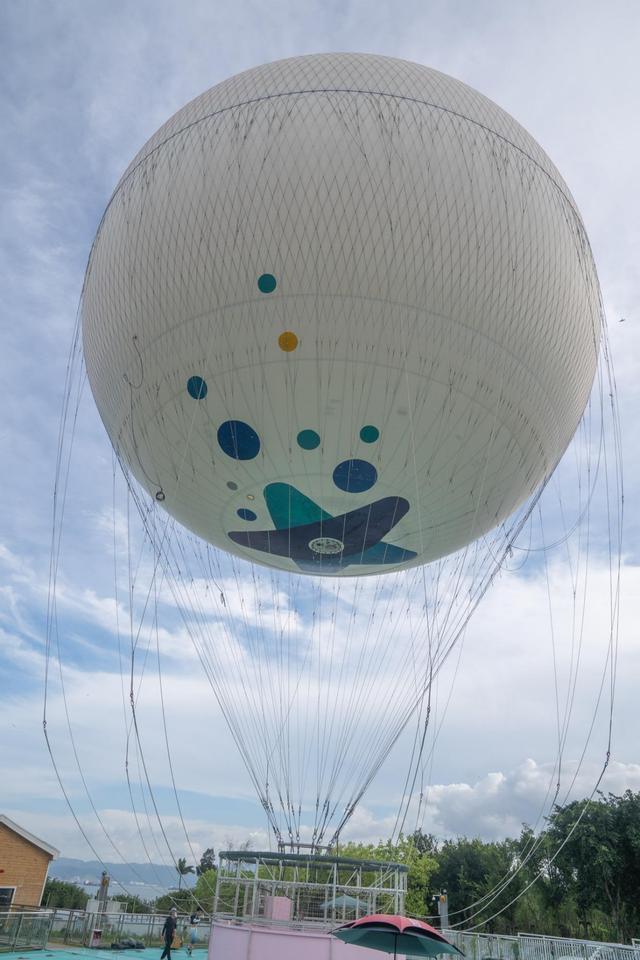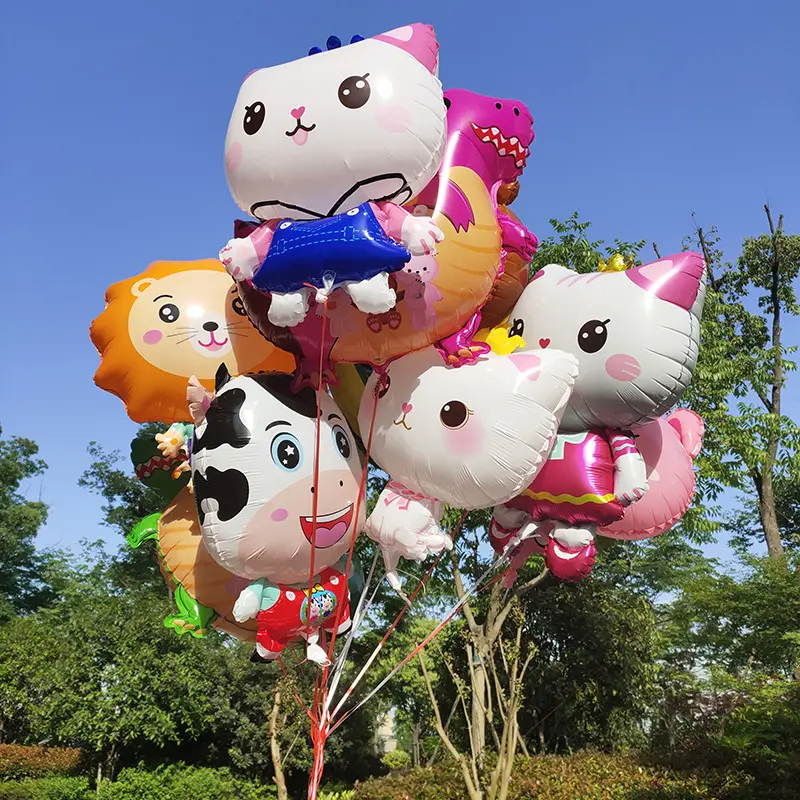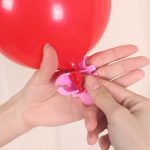Helium balloons are a delightful addition to any celebration, adding a whimsical touch and vibrant color to the atmosphere. However, their lifespan is often limited, leaving many wondering how to extend the float time and enjoy their balloons for as long as possible. In this comprehensive guide, we’ll explore various tips and techniques for making helium balloons last longer, from proper handling and storage to creative alternatives for extending their float time.
1. Quality Matters: Choose High-Quality Balloons
When it comes to helium balloons, not all are created equal. Opting for high-quality balloons made from durable materials can significantly impact their longevity. Look for balloons made from thick latex or Mylar, which are less prone to leaks and punctures. While high-quality balloons may come with a slightly higher price tag, the investment is worth it for the extended float time and overall durability they provide.

2. Optimal Inflation: Don’t Overinflate
Proper inflation is crucial for maximizing the float time of helium balloons. Avoid overinflating balloons, as this can put unnecessary strain on the material and increase the risk of popping. Use a helium tank or professional-grade inflator to achieve the optimal size for your balloons, following the manufacturer’s recommendations for inflation volume. Overinflated balloons are more likely to burst prematurely, so take care to inflate them to the appropriate size for maximum longevity.
3. Seal It Tight: Secure the Knot
A secure knot is essential for preventing helium from escaping and prolonging the float time of your balloons. After inflating each balloon, tie a tight knot at the end of the neck, ensuring it is securely sealed. Consider using a balloon-tying tool or quick-tie device for added convenience and efficiency. Double-check each knot to ensure it is tight and secure before releasing the balloon, minimizing the risk of leakage and maximizing its float time.

4. Avoid Heat and Sunlight: Keep Balloons Cool
Heat and sunlight can have a detrimental effect on the float time of helium balloons, causing them to deflate more rapidly. Keep balloons away from direct sunlight and sources of heat, such as heaters, radiators, or sunny windows. Optimal storage conditions include a cool, dry environment with consistent temperature and humidity levels. By minimizing exposure to heat and sunlight, you can extend the float time of your balloons and enjoy them for longer periods.
5. Gentle Handling: Handle with Care
Helium balloons are delicate by nature and require gentle handling to prevent damage or punctures. Avoid rough handling or excessive squeezing, as this can weaken the material and increase the risk of leaks. When transporting balloons, hold them by the neck or tie them securely to a weight to prevent them from floating away. Keep balloons away from sharp objects, rough surfaces, and rough handling to maintain their integrity and prolong their float time.

6. Use Hi-Float: Extend Float Time with a Coating
Hi-Float is a specially formulated balloon treatment that can extend the float time of helium balloons by coating the interior surface and slowing down helium leakage. To use Hi-Float, inflate the balloon with helium as usual, then insert the dispenser tip into the neck and squeeze the desired amount of solution into the balloon. Swirl the balloon gently to distribute the solution evenly, then inflate to the desired size. Hi-Float creates a barrier that seals helium inside the balloon, extending its float time by days or even weeks.
7. Consider Alternative Gases: Try a Helium Alternative
While helium is the most commonly used gas for inflating balloons, there are alternative gases available that can offer longer float times and unique effects. For example, hydrogen balloons have a higher lifting capacity than helium and can stay aloft for longer periods. However, hydrogen is highly flammable and must be used with caution. Another option is nitrogen, which is non-flammable and non-toxic but has a lower lifting capacity than helium. Consider experimenting with different gases to achieve the desired float time and effect for your balloons.

8. Reinforce with Ribbon: Add Stability with Ribbon Tethers
Adding ribbon tethers to helium balloons can provide additional stability and prevent them from floating away or becoming entangled. Tie a length of ribbon securely to the neck of each balloon, leaving enough slack to allow for movement without dragging on the ground. Anchor the other end of the ribbon to a weight or stationary object to keep the balloons grounded and prevent them from drifting away. Ribbon tethers not only add visual appeal but also help extend the float time of helium balloons by keeping them securely in place.
9. Rejuvenate with Cold Air: Revive Deflating Balloons
If your helium balloons begin to deflate prematurely, you can extend their float time temporarily by exposing them to cold air. Place the deflating balloons in a refrigerator or freezer for a short period, allowing the cold air to shrink the helium molecules and temporarily restore their buoyancy. Keep in mind that this method is only a temporary solution and may not work for balloons that are severely deflated or damaged. Use caution when handling frozen balloons to avoid damaging the material or causing injury.

10. Embrace Creativity: Explore Alternative Uses
When helium balloons begin to lose their float time, don’t despair—instead, embrace creativity and explore alternative uses for them. Repurpose deflating balloons as decorative accents for centerpieces, gift toppers, or party favors. Use balloons to create colorful sculptures, arches, or garlands that add visual interest to your space. Alternatively, deflate balloons completely and save them for future projects or crafts. By thinking outside the box and embracing creative solutions, you can extend the lifespan of helium balloons and continue to enjoy their beauty and charm long after they’ve stopped floating.
11. Sustainability Considerations: Dispose Responsibly
When it’s time to bid farewell to your helium balloons, it’s essential to dispose of them responsibly to minimize environmental impact. Avoid releasing balloons into the air, as they can pose a threat to wildlife and marine animals and contribute to litter pollution. Instead, deflate balloons completely and dispose of them in the appropriate waste bin or recycling receptacle. Consider using biodegradable balloons made from natural materials, such as latex or rice paper, which break down more quickly and reduce environmental harm. By practicing responsible disposal habits, you can enjoy helium balloons responsibly while minimizing their ecological footprint.
12. Conclusion: Enjoying Extended Float Time
In conclusion, with careful handling and strategic techniques, it’s possible to extend the float time of helium balloons and enjoy their beauty and charm for longer periods. By choosing high-quality balloons, properly inflating and sealing them, and minimizing exposure to heat and sunlight, you can maximize their longevity and ensure hours of festive fun. Consider exploring alternative gases, using balloon treatments like Hi-Float, or repurposing deflating balloons creatively to extend their lifespan even further. With these tips and techniques, you can make the most of your helium balloons and create memorable moments that float on air.


